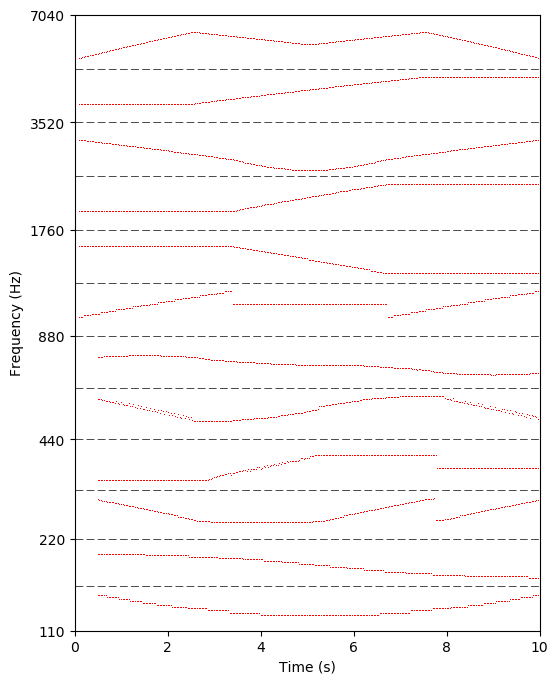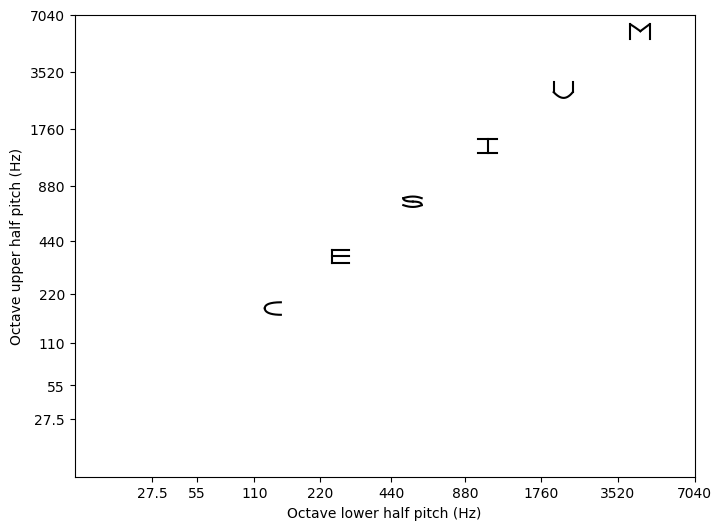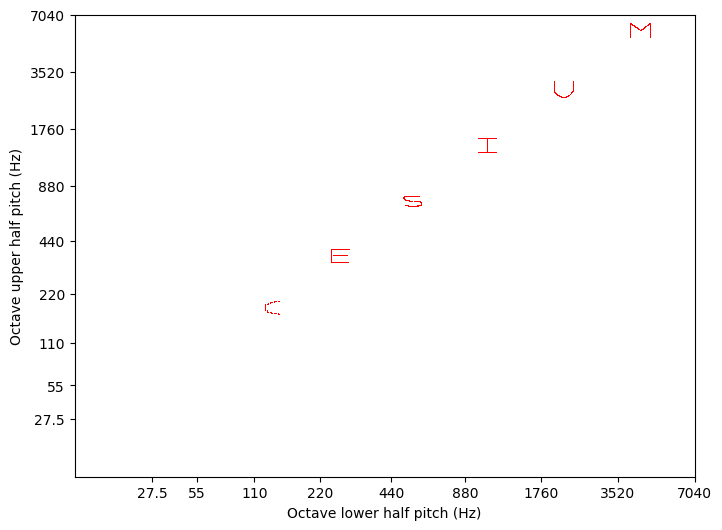The sound file consists of several sine wave tones, played simultaneously. The frequency of each tone changes over time—but each tone is confined to a distinct range of frequencies, such that the tones may be isolated from each other using band-pass filters, or identified using frequency analysis software such as Sonic Visualiser.
Each standard octave (as defined by the A440 ISO 16 pitch standard) contains exactly two tones—one confined to the lower half of the octave, and one to the upper half. The clips below each contain the two tones present in a single octave. (Be careful to lower your volume before playing these clips—they contain some very loud low and high frequencies).
-
110 Hz to 220 Hz
-
220 Hz to 440 Hz
-
440 Hz to 880 Hz
-
880 Hz to 1760 Hz
-
1760 Hz to 3520 Hz
-
3520 Hz to 7040 Hz
Once a tone is isolated, its frequency at any given moment in time can be determined mathematically using a discrete Fourier transform—or the solver can simply consider the relative change in frequency of each tone within its frequency band to determine the direction and amount of movement indicated by that tone.

Treating the frequency of the tone in the lower half of an octave as an X coordinate, and the frequency of the tone in the upper half of an octave as a Y coordinate, the signals within each octave can be plotted. These plots draw letters, which spell the answer, CESIUM.

The figure above is a plot of the curves used to produce the tones written into the audio file when generating this puzzle.

The figure above is a plot of the frequencies obtained by applying a discrete Fourier transform to the puzzle audio file.

